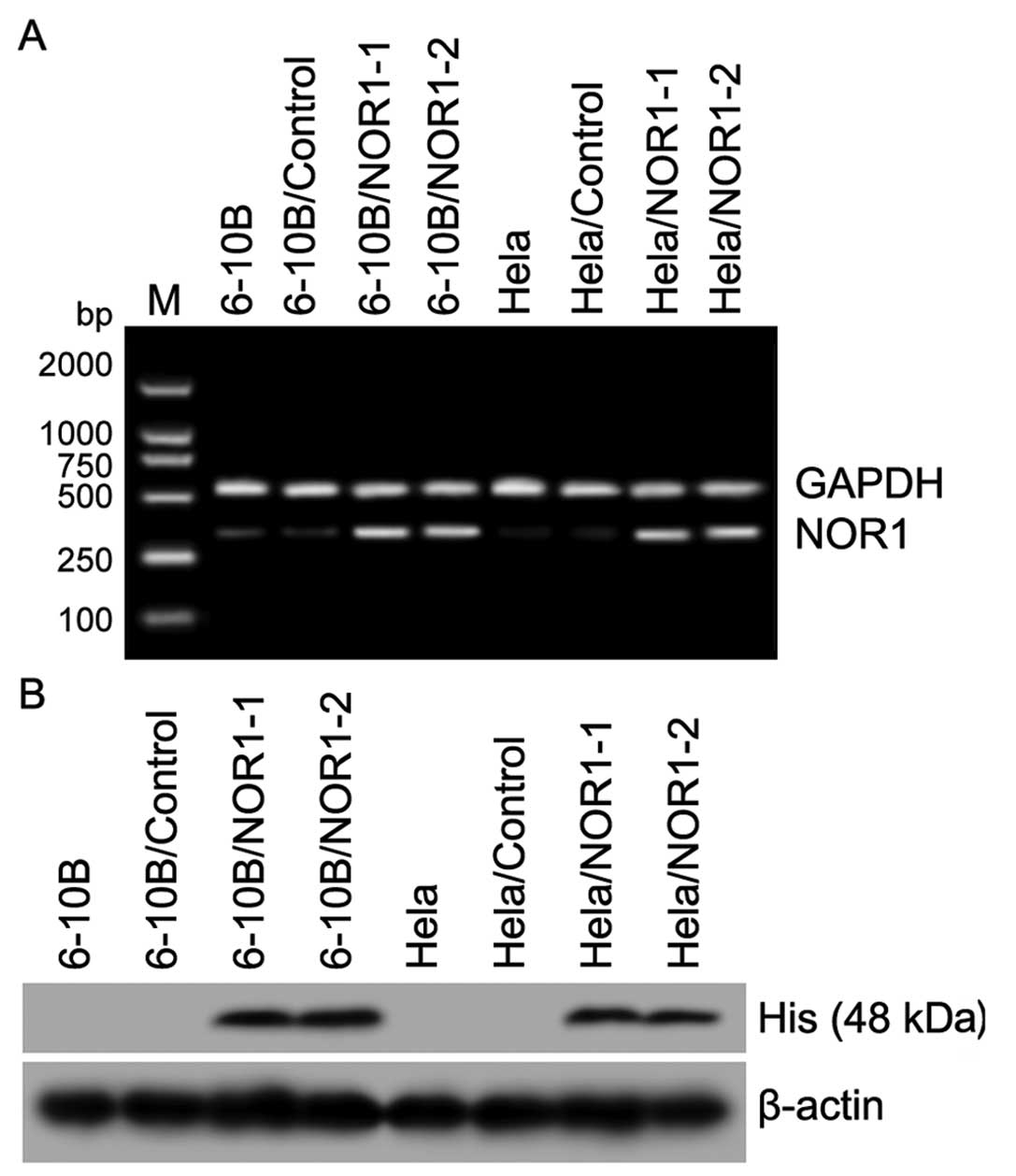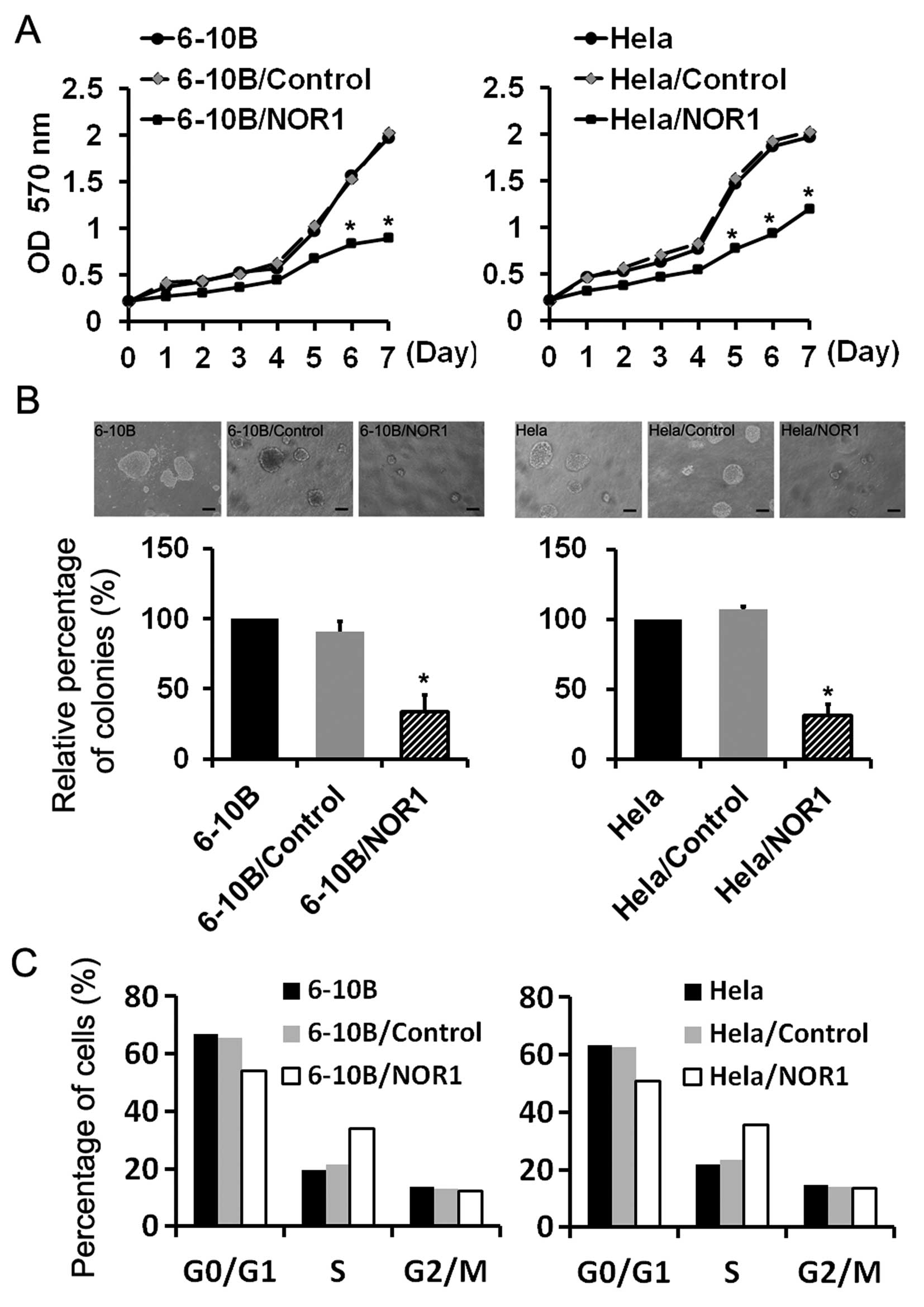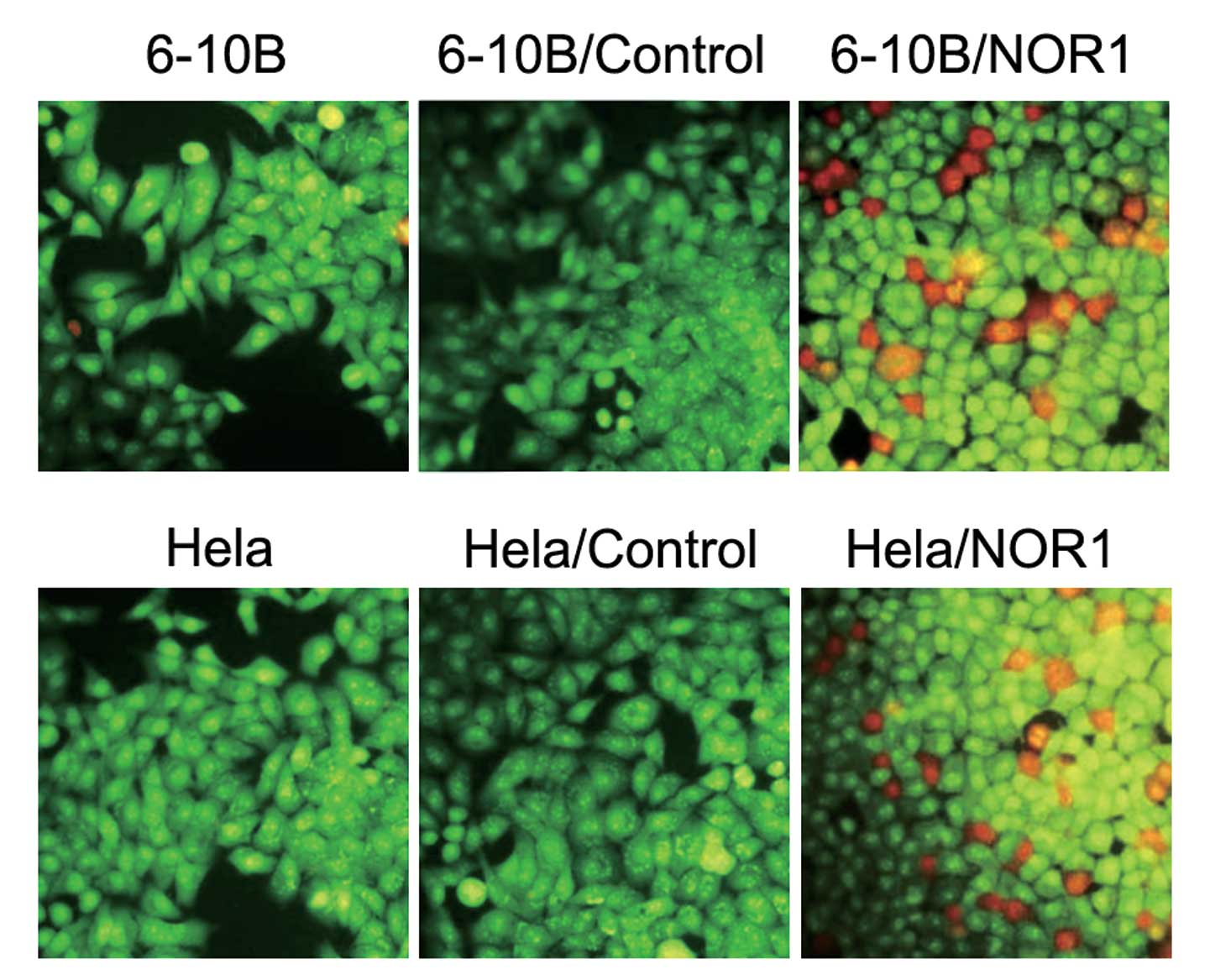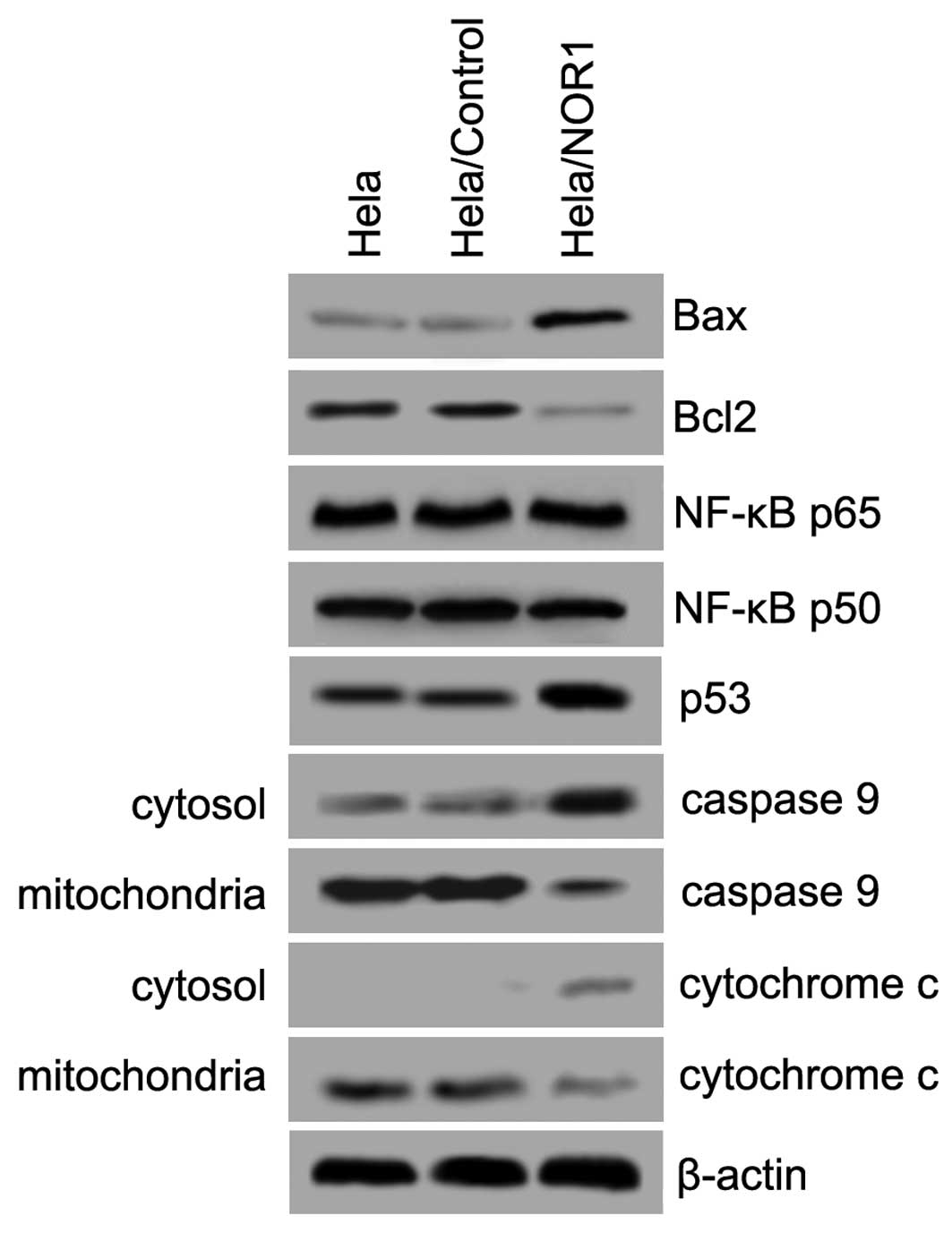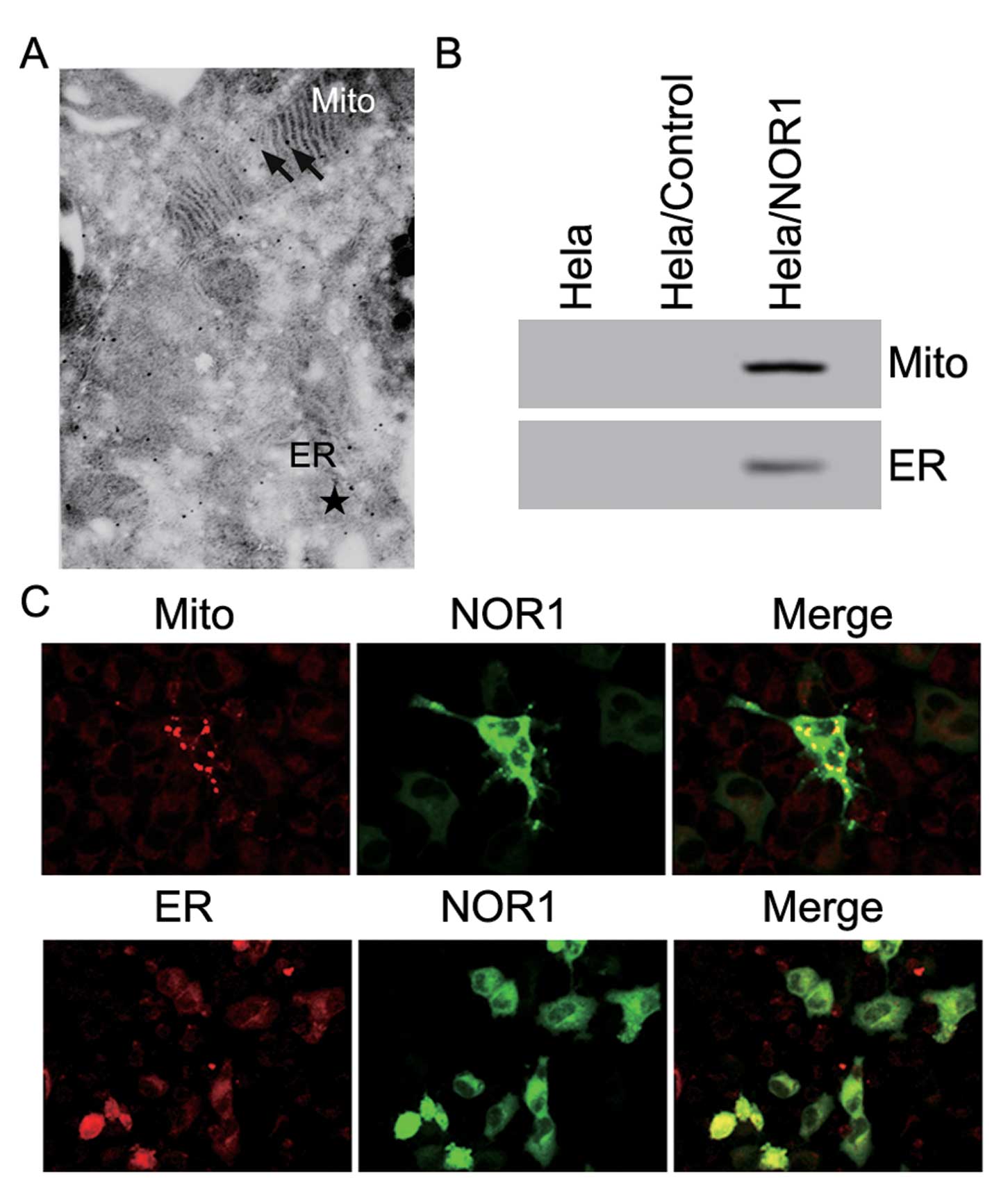|
1
|
Nie X, Zhang B, Li X, et al: Cloning,
expression, and mutation analysis of NOR1, a novel human gene
down-regulated in HNE1 nasopharyngeal carcinoma cell line. J Cancer
Res Clin Oncol. 129:410–414. 2003. View Article : Google Scholar : PubMed/NCBI
|
|
2
|
Xiang B, Yi M, Wang L, et al: Preparation
of polyclonal antibody specific for NOR1 and detection of its
expression pattern in human tissues and nasopharyngeal carcinoma.
Acta Biochim Biophys Sin. 41:754–762. 2009. View Article : Google Scholar
|
|
3
|
Li W, Li X, Wang W, et al: NOR1 is an
HSF1- and NRF1-regulated putative tumor suppressor inactivated by
promoter hypermethylation in nasopharyngeal carcinoma.
Carcinogenesis. 32:1305–1314. 2011. View Article : Google Scholar : PubMed/NCBI
|
|
4
|
Kroeger H, Jelinek J, Estecio MR, et al:
Aberrant CpG island methylation in acute myeloid leukemia is
accentuated at relapse. Blood. 112:1366–1373. 2008. View Article : Google Scholar : PubMed/NCBI
|
|
5
|
Calmels S, Ohshima H, Rosenkranz H, McCoy
E and Bartsch H: Biochemical studies on the catalysis of
nitrosation by bacteria. Carcinogenesis. 8:1085–1088. 1987.
View Article : Google Scholar : PubMed/NCBI
|
|
6
|
Reznik G, Mohr U and Kruger FW:
Carcinogenic effects of Di-n-propylnitrosamine,
beta-hydroxypropyl-n-propylnitrosamine, and
methyl-n-propylnitrosamine on Sprague-Dawlay rats. J Natl Cancer
Inst. 54:937–943. 1975.PubMed/NCBI
|
|
7
|
Lijinsky W and Taylor HW: Carcinogenicity
of methylated nitrosopiperidines. Int J Cancer. 16:318–322. 1975.
View Article : Google Scholar
|
|
8
|
Chang ET and Adami HO: The enigmatic
epidemiology of nasopharyngeal carcinoma. Cancer Epidemiol
Biomarkers Prev. 15:1765–1777. 2006. View Article : Google Scholar : PubMed/NCBI
|
|
9
|
Lo KW, To KF and Huang DP: Focus on
nasopharyngeal carcinoma. Cancer Cell. 5:423–428. 2004. View Article : Google Scholar : PubMed/NCBI
|
|
10
|
Lin YP, Nicholas K, Ball FR, McLaughlin B
and Bishai FR: Detection of Norwalk-like virus and specific
antibody by immune-electron microscopy with colloidal gold immune
complexes. J Virol Methods. 35:237–253. 1991. View Article : Google Scholar : PubMed/NCBI
|
|
11
|
Yan J, Fang Y and Liang Q: Frequent
chromosomal gain of 4q and loss of 1p in primary nasopharyngeal
carcinoma. Zhonghua Zhong Liu Za Zhi. 23:208–210. 2001.(In
Chinese).
|
|
12
|
Fang Y, Guan X, Guo Y, et al: Analysis of
genetic alterations in primary nasopharyngeal carcinoma by
comparative genomic hybridization. Genes Chromosomes Cancer.
30:254–260. 2001. View Article : Google Scholar : PubMed/NCBI
|
|
13
|
Shao JY, Wang HY, Huang XM, et al:
Genome-wide allelotype analysis of sporadic primary nasopharyngeal
carcinoma from southern China. Int J Oncol. 17:1267–1275.
2000.PubMed/NCBI
|
|
14
|
Lo KW, Teo PM, Hui AB, et al: High
resolution allelotype of microdissected primary nasopharyngeal
carcinoma. Cancer Res. 60:3348–3353. 2000.PubMed/NCBI
|
|
15
|
Gadji M, Fortin D, Tsanaclis AM and Drouin
R: Is the 1p/19q deletion a diagnostic marker of
oligodendrogliomas? Cancer Genet Cytogenet. 194:12–22. 2009.
View Article : Google Scholar : PubMed/NCBI
|
|
16
|
Tews B, Roerig P, Hartmann C, et al:
Hypermethylation and transcriptional downregulation of the CITED4
gene at 1p34.2 in oligodendroglial tumours with allelic losses on
1p and 19q. Oncogene. 26:5010–5016. 2007. View Article : Google Scholar : PubMed/NCBI
|
|
17
|
Chunder N, Mandal S, Basu D, Roy A,
Roychoudhury S and Panda CK: Deletion mapping of chromosome 1 in
early onset and late onset breast tumors - a comparative study in
eastern India. Pathol Res Pract. 199:313–321. 2003. View Article : Google Scholar : PubMed/NCBI
|
|
18
|
Jung JY and Kim WJ: Involvement of
mitochondrial- and Fas-mediated dual mechanism in
CoCl2-induced apoptosis of rat PC12 cells. Neurosci
Lett. 371:85–90. 2004. View Article : Google Scholar : PubMed/NCBI
|
|
19
|
Gross A, McDonnell JM and Korsmeyer SJ:
BCL-2 family members and the mitochondria in apoptosis. Genes Dev.
13:1899–1911. 1999. View Article : Google Scholar : PubMed/NCBI
|
|
20
|
Kruse JP and Gu W: Modes of p53
regulation. Cell. 137:609–622. 2009. View Article : Google Scholar
|
|
21
|
Wang CY, Mayo MW, Korneluk RG, Goeddel DV
and Baldwin AS Jr: NF-kappaB antiapoptosis: induction of TRAF1 and
TRAF2 and c-IAP1 and c-IAP2 to suppress caspase-8 activation.
Science. 281:1680–1683. 1998. View Article : Google Scholar : PubMed/NCBI
|
|
22
|
Kucharczak J, Simmons MJ, Fan Y and
Gelinas C: To be, or not to be: NF-kappaB is the answer - role of
Rel/NF-kappaB in the regulation of apoptosis. Oncogene.
22:8961–8982. 2003. View Article : Google Scholar : PubMed/NCBI
|
|
23
|
Stoffel A and Levine AJ: Actvation of
NF-kappaB by the API2/MALT1 fusions inhibits p53 dependant but not
FAS induced apoptosis: a directional link between NF-kappaB and
p53. Cell Cycle. 3:1017–1020. 2004. View Article : Google Scholar : PubMed/NCBI
|
|
24
|
Yin Y, Chen W, Tang C, et al: NF-kappaB,
JNK and p53 pathways are involved in tubeimoside-1-induced
apoptosis in HepG2 cells with oxidative stress and G(2)/M cell
cycle arrest. Food Chem Toxicol. 49:3046–3054. 2011. View Article : Google Scholar : PubMed/NCBI
|
|
25
|
Maldonado ME, Bousserouel S, Gosse F,
Lobstein A and Raul F: Implication of NF-kappaB and p53 in the
expression of TRAIL-death receptors and apoptosis by apple
procyanidins in human metastatic SW620 cells. Biomedica.
30:577–586. 2010. View Article : Google Scholar : PubMed/NCBI
|
|
26
|
Pratheeshkumar P, Sheeja K and Kuttan G:
Andrographolide induces apoptosis in B16F-10 melanoma cells by
inhibiting NF-kappaB-mediated bcl-2 activation and modulating
p53-induced caspase-3 gene expression. Immunopharmacol
Immunotoxicol. 34:143–151. 2012. View Article : Google Scholar : PubMed/NCBI
|
















